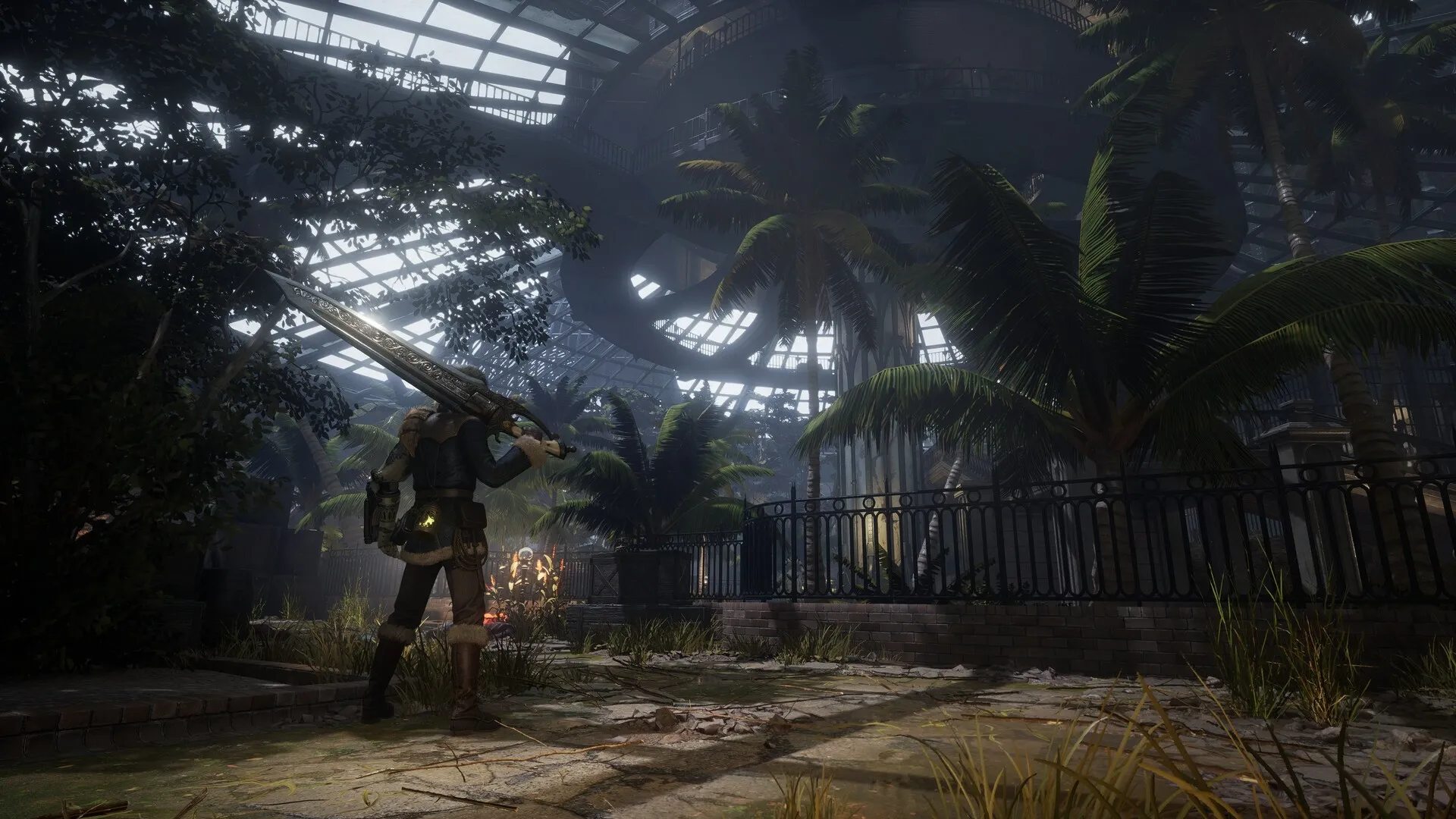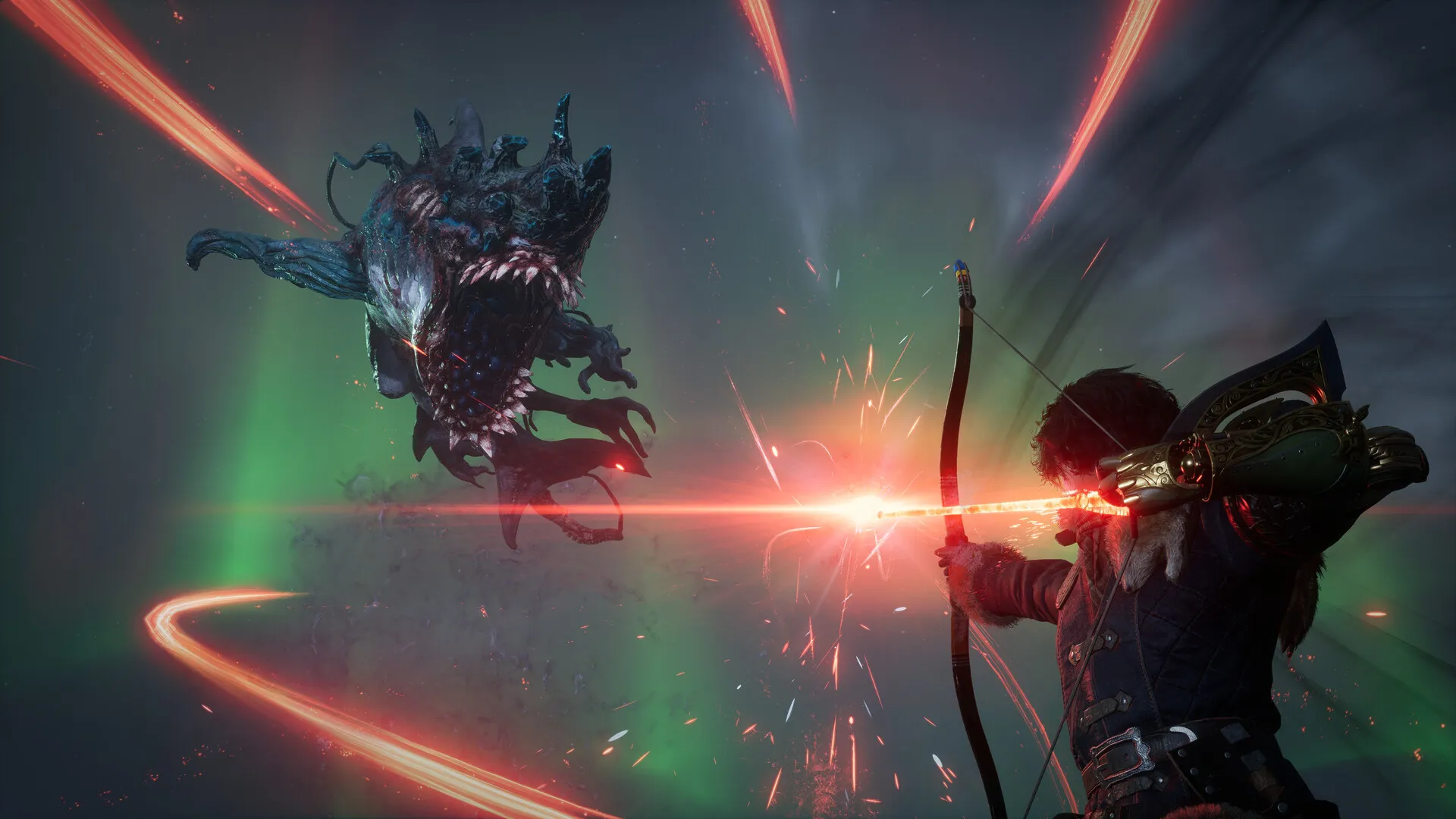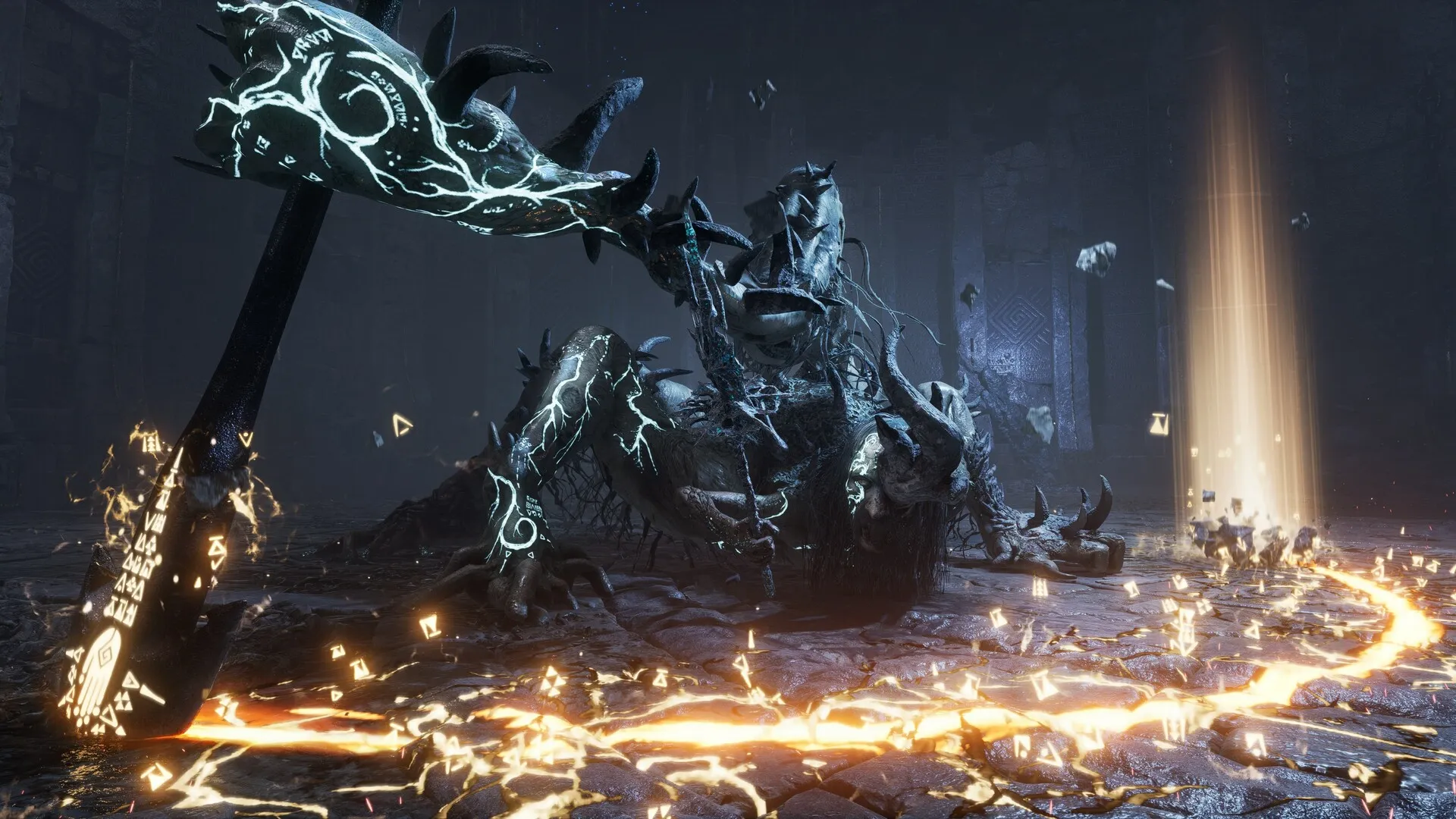Returning to the city of Krat is like revisiting a beautiful, chilling nightmare. The base game painted a memorable picture of a Belle Époque metropolis brought to its knees, its streets prowled by murderous puppets while a petrifying disease consumed its citizens. The air was thick with unanswered questions about how such a marvel of engineering could so thoroughly collapse.
The new chapter, titled “Overture,” does not move the timeline forward but instead plunges it backward. Through a peculiar twist of fate, our stringless hero P is sent into the past, tasked with witnessing the city’s final days of grandeur before the Puppet Frenzy began.
This is not merely a side story; it is a critical piece of narrative architecture. The journey’s purpose is to stand on the precipice and watch the first dominoes fall, providing crucial context for the ruin we already know. For those captivated by the core mystery of Krat’s demise, this is an essential, haunting pilgrimage back to the source of the tragedy.
A Requiem in Reverse
Most prequels place you at a story’s clear starting point. Lies of P: Overture employs a more sophisticated narrative structure. You access this journey into the past deep within the main campaign, creating a fascinating paradox for the player. You are not a fresh hero discovering a new world; you are a ghost from a terrible future, walking through halls and streets that are not yet ruins.
This foreknowledge imbues every moment with a profound dramatic irony. You see the glimmers of hope in characters you know are doomed and witness the small acts of hubris that will lead to city-wide catastrophe. It transforms the act of exploration from one of discovery into one of tragic observation.
This structural choice is not merely a gimmick; it is the core of the DLC’s narrative power. “Overture” serves to resolve many of the lingering questions left by the base game, filling in the background of key events and figures with satisfying clarity. The world of Krat feels more coherent and complete with this added context. The title itself is a masterstroke of thematic design.
A musical overture introduces melodies that are fully developed later in the performance. Here, the “melodies” are the origins of the chaos and characters we have already met. We are hearing the introduction after already knowing the tragic symphony, which re-contextualizes everything we thought we knew.
The narrative is delivered with a light touch, relying heavily on the power of its environments. The settings are not just backdrops for combat; they are storytellers in their own right. The journey through the once-grand Krat Zoo is a perfect example.
A space designed to showcase life and order becomes a stage for the first horrific signs of the petrification disease and the Puppet Frenzy. Macabre tableaus of animal and machine tell a grim story of paradise on the brink of collapse. The world itself shows the initial cracks in Krat’s gilded cage, allowing the player to piece together the fall through observation rather than exposition.
More Strings for the Marionette
Anyone returning to Krat will find the brutal, demanding rhythm of its combat waiting for them, unchanged. “Overture” does not reinvent the core mechanics that made the base game so compelling. The action is still a high-stakes dance of aggression, built upon the foundation of the Perfect Guard system.
Success demands precise timing and a commitment to standing your ground against terrifying foes, making every victory feel earned. The DLC wisely recognizes the strength of this system and instead focuses on expanding the player’s options within it, adding new layers of strategic choice to a familiar and punishing cadence.
The most significant changes arrive in the form of an expanded arsenal. The new weapons are not simple statistical variations; they introduce genuinely fresh playstyles. New bladed claws cater to dexterity-focused players, enabling a flurry of rapid, close-range strikes that feel distinct from the more deliberate combat of greatswords. A proper bow makes its debut, finally offering a viable, dedicated ranged option.
It allows players to control encounters from a distance and pick off troublesome enemies, though its damage is balanced to ensure it complements, rather than replaces, melee. The star of the show is a new Gunblade, a heavy sword with a firearm embedded in its hilt.
Its heavy attack is a gunshot that simultaneously damages an enemy and propels the player backward into a safe position. A second input then launches you forward into a powerful follow-up lunge. It’s a brilliant fusion of offense and evasion, a weapon that allows for dynamic control of spacing in a fight.
Further customization comes from new Legion Arms. One functions like a powerful shotgun, perfect for delivering a staggering blast at close range, while another unleashes spinning blades that apply continuous pressure to a single target. These tools add new tactical wrinkles to any build. To counterbalance these new toys, “Overture” introduces a chilling new status effect: Freezing.
This debuff severely restricts movement, directly challenging the dodge-heavy playstyles many players rely on. It’s a clever design choice that forces adaptation, preventing veterans from simply falling back on muscle memory. A new passive upgrade tree also provides more runway for character progression, offering incremental boosts to damage and defense that give high-level players meaningful new goals to pursue.
The Architecture of a Downfall
The single greatest strength of “Overture’s” world design is the opportunity to walk through Krat before its utter ruin. This is more than a simple visual change; it’s a powerful narrative tool. Seeing these locations intact, knowing the destruction that awaits them, creates a constant, melancholic undertone to exploration. The Krat Zoo serves as the prime exhibit for this design philosophy.
What should be a symbol of life and civic pride is instead a horrifying prologue to the city’s fate. Its enclosures hold not just deranged puppets but the first victims of the petrification disease, transforming a place of wonder into a deeply unsettling stage where the tragedy we know is coming takes its first steps. The space itself tells the story, functioning as a perfect microcosm of the city’s imminent collapse.
This high level of environmental storytelling continues through other diverse locations. A winter carnival perverts the very idea of fun, its functional rides and twisted shooting galleries offering a brief but eerie respite from the constant tension. Elsewhere, you navigate a treacherous frozen lake, traversing the icy hulls of broken ships under the glow of an ethereal aurora.
These areas are not just visually distinct; they are designed with the same intricate philosophy as the base game. The levels are semi-open, rewarding players who venture off the main path with shortcuts, hidden items, and fragments of lore. The design encourages a curiosity that is essential for a game that hides so much of its narrative within the details of its world.
However, the creative spark does not burn with equal intensity across all the new zones. After the imaginative designs of the zoo and the carnival, a descent into an underground prison and laboratory feels disappointingly generic.
With its tiled corridors and gurneys, it’s a space that leans heavily on established video game tropes and lacks the unique character that makes Krat so memorable. While the level layout remains engaging from a gameplay perspective, its visual and thematic design represents a clear dip in inspiration compared to the masterfully crafted environments that precede it.
Dance of the Damned
“Overture” populates its new environments with a fresh bestiary of horrors that are thematically tied to their surroundings. The Krat Zoo is overrun with vicious, petrified animals, from hulking apes to a monstrous alligator, while the fairground is defended by robotic clowns and menacing strongmen.
While some familiar puppet models make a return, the new enemy variety is a welcome addition that keeps exploration feeling dangerous and unpredictable. However, these creatures are merely the opening act for the DLC’s main event: the boss encounters.
These fights are the clear centerpieces of the experience, designed not as frustrating walls but as intricate puzzles of timing and aggression. The design philosophy emphasizes fairness; each boss is a memorable, challenging duel that tests your mastery of the game’s parry-focused combat, rewarding pattern recognition over brute force.
The quality of these encounters is consistently high. An early battle against a giant, frenzied beast serves as the perfect gatekeeper, immediately forcing a returning player to re-engage with the game’s demanding combat rhythm.
The standout encounter, however, is a duel against a puppeteer who fights in tandem with her deadly marionette. Multi-enemy boss fights are often a point of frustration in this genre, but this one is handled with exceptional elegance.
A glowing tether connects the two combatants, flashing brightly to telegraph an attack from the off-screen puppet. This simple visual cue is a brilliant piece of design, transforming a potentially chaotic fight into a readable and manageable dance. The DLC concludes with a final boss whose attacks are wonderfully complex, a climactic test of skill that feels like a true performance, making the final victory all the more satisfying.
Lowering the Drawbridge
Beyond the main story content, a free update accompanying “Overture” adds features that cater to both seasoned veterans and newcomers. For those seeking to prove their mastery, two new modes offer ways to re-engage with the game’s spectacular boss fights. “Battle Memories” allows you to challenge any defeated boss on escalating difficulty settings, while “Death March” provides a true test of endurance with a sequential boss rush.
More significantly, the update introduces new difficulty options that lower the barrier to entry. Settings like “Butterfly’s Guidance” are a welcome acknowledgment that the game’s rich world and narrative deserve to be seen by a broader audience.
They make the experience more manageable for players primarily interested in the story, reducing damage taken and increasing damage dealt. This is not a simple “story mode,” however; a respectable level of challenge remains. It’s a thoughtful re-balancing that makes a demanding game more approachable without entirely removing its teeth.
The Review
Lies of P: Overture
Lies of P: Overture is an exemplary expansion, deepening the main story through its clever paradoxical narrative. It doesn't reinvent the game's punishing combat, but instead enriches it with a host of creative new weapons and formidable, brilliantly designed boss encounters. While a few environments lack the imagination of the rest, this is a beautiful and brutal return to Krat. It stands as an essential chapter that reframes the entire saga, making it a must-play for anyone invested in the fate of the city and its stringless puppet.
PROS
- Intelligent prequel narrative that enhances the original story.
- Superb boss fights with fair and memorable mechanics.
- New weapons provide meaningful additions to gameplay.
- Atmospheric and visually inventive level design in most areas.
CONS
- Some environmental design feels generic compared to the highs.
- Does not introduce major new foundational ideas to the core gameplay.



















































